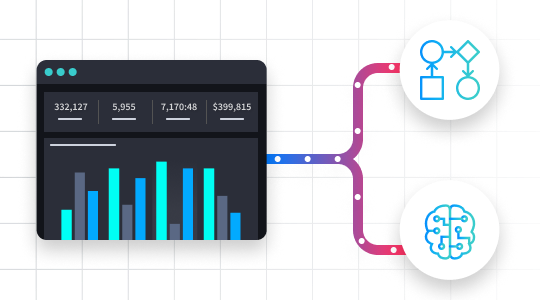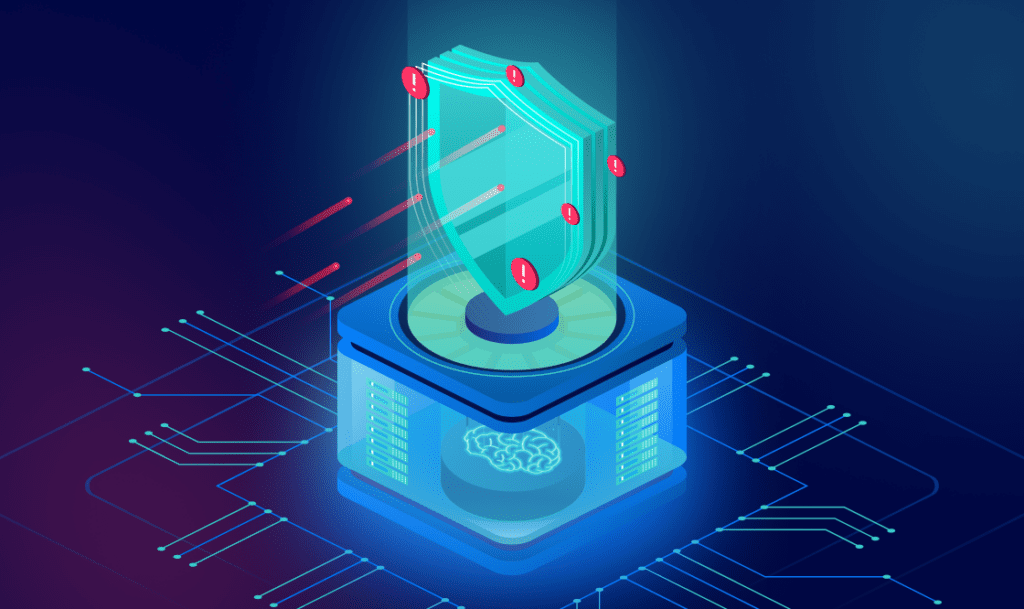What is an AI SOC?
A Security Operations Center (SOC) powered by artificial intelligence (AI) leverages machine learning, generative AI, and hyperautomation to enhance threat detection, response, and mitigation. Traditional SOCs rely on manual processes that often lead to alert fatigue, slow response times, and operational inefficiencies. An AI-driven SOC (AI SOC) automates these tasks, enabling security teams to handle higher alert volumes, detect sophisticated threats faster, and optimize workflows.
AI SOC Use Cases
Automate Threat Triage and Investigation
Security teams often face the challenge of handling thousands of alerts daily, making it difficult to distinguish real threats from false positives. AI-driven SOCs automate threat triage and investigation by categorizing alerts, prioritizing high-risk threats, and enriching incident data with relevant context.
AI-Powered Phishing and Email Security Automation
Phishing attacks continue to be one of the most common and effective cyber threats. AI SOCs enhance email security by analyzing email content, sender behavior, and metadata to identify phishing attempts in real time. Advanced AI models can detect subtle anomalies in email patterns that may indicate a malicious attack, such as domain spoofing, suspicious links, or unusual sender activity.
Integrate AI with Threat Intelligence
Threat intelligence plays a vital role in SOC operations, but manually analyzing vast amounts of data can be time-consuming and inefficient. AI-driven SOCs enhance threat intelligence by automatically correlating data from multiple sources, identifying attack patterns, and predicting emerging threats.
Behavioral Anomaly Detection with AI
Traditional security approaches often rely on static rules and signatures, which can be ineffective against unknown or evolving threats. AI-driven behavioral analytics allow SOCs to detect anomalies in real-time, identifying suspicious activities such as unusual login patterns, lateral movement within the network, or deviations from normal user behavior.
Optimize SOAR with AI and Hyperautomation
Security Orchestration, Automation, and Response (SOAR) platforms are crucial for modern SOCs, but manual processes and rigid automation frameworks can limit their effectiveness. AI-driven SOAR solutions enhance automation capabilities by dynamically adjusting response workflows based on real-time threat intelligence and evolving attack patterns.
4 AI SOC Benefits
1. Scale SOC Operations
As cyber threats continue to increase, SOC teams must scale their operations without significantly increasing headcount. AI-driven automation enables organizations to handle larger alert volumes, optimize resource allocation, and maintain high efficiency without requiring additional analysts.
2. Reduce Alert Fatigue and False Positives
AI-driven security automation helps SOC analysts reduce alert fatigue by filtering out noise and prioritizing high-risk incidents. Traditional SOCs often struggle with an overload of security alerts, many of which turn out to be false positives or low-priority events.
3. Accelerate Incident Response Times
Every second counts in a cybersecurity incident. AI-driven SOCs significantly reduce response times by automating investigation and containment processes. Instead of manually correlating security data, analysts can rely on AI-driven playbooks that take immediate action based on predefined response protocols.
4. Enhance Threat Detection and Predictive Analysis
AI-driven analytics enable SOCs to identify potential threats before they materialize. By analyzing historical attack data, threat intelligence feeds, and user behaviors, AI models can predict vulnerabilities and preemptively strengthen security defenses.
Will Artificial Intelligence Replace Your SOC?
While AI is transforming SOC operations, it is not a replacement for human analysts. AI enhances efficiency by automating repetitive tasks, providing contextual threat intelligence, and accelerating response times, but human expertise is still required for strategic decision-making, threat hunting, and managing complex attack scenarios.
Swimlane’s approach ensures that AI works alongside security professionals, augmenting their capabilities rather than replacing them.
How Swimlane Powers AI-Driven Security Operations
Swimlane’s low-code security automation platform integrates AI and hyperautomation to deliver scalable, AI-driven SOC operations. By enhancing threat detection, reducing manual workload, and accelerating response times, Swimlane empowers organizations to stay ahead of cyber threats with efficiency and agility.
AI SOCs FAQs
Will AI Replace Humans in a SOC?
AI excels at processing massive datasets, detecting patterns, and responding to known threats at machine speed. However, it struggles with contextual decision-making, creative problem-solving, and understanding the intent behind emerging attack techniques. Human analysts bring strategic thinking, adaptability, and intuition that AI simply cannot replicate. Discover our blog, Will AI Take Over Cybersecurity Jobs for more information.
How does an AI SOC differ from a traditional SOC?
An AI SOC leverages artificial intelligence, machine learning, and automation to analyze threats, prioritize alerts, and respond to incidents in real time, significantly reducing manual workload. In contrast, a traditional SOC relies on manual processes and rule-based detection, which can be slow and inefficient when handling large-scale threats.
How Does Swimlane’s AI-driven Automation Improve SOC Efficiency?
Swimlane’s agentic AI automation platform reduces alert fatigue, automates threat triage, and streamlines response workflows, enabling SOC teams to scale operations without increasing manual workload. With AI-driven decision-making and unmatched flexibility, Swimlane ensures SecOps stay ahead of tomorrow’s threats while solving the most complex security, compliance, and IT/OT challenges.

See Swimlane Turbine in Action
If you haven’t had the chance to explore Swimlane Turbine yet, request a demo below.


